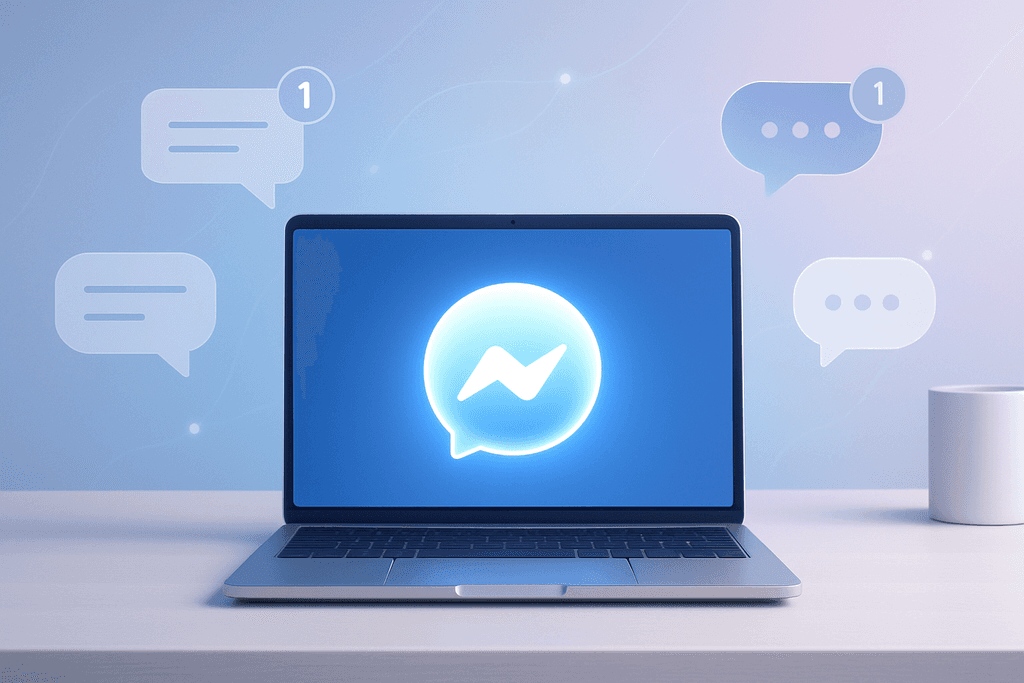This article distills the news, latest updates, and insights small businesses need to blend Facebook Messenger with a modern website chat experience—without extra complexity.
Launch your website chat in minutes
- Meta removed the official Messenger “Chat Plugin” for websites on May 9, 2024 (see the Meta developer notice for details). Meta developer documentation.
- Facebook remains widely used in the U.S.: 68% of adults report using it (Pew Research Center, Jan 31, 2024). Pew Research report.
- Global social media user identities reached 5.31 billion as of April 2025 (DataReportal). DataReportal Statshot.
- Facebook reported its highest number of young adult daily users in three years—over 40 million 18–29-year-olds in the U.S. and Canada (Reuters, May 31, 2024). Reuters coverage.
Why Messenger still matters for small businesses
Even though the old Messenger website plugin was retired, Messenger still reaches customers where they already spend time. With Facebook usage steady among U.S. adults and strong daily activity among younger users, keeping a Messenger entry point in your customer journey remains a smart way to capture interest and continue conversations after someone leaves your site (Pew Research, 2024; Reuters, 2024).
- Low-friction channel most visitors already recognize.
- Great for quick questions, quotes, and appointment follow-ups.
- Pairs well with your primary website chat for instant answers and lead capture.
Use Messenger for “keep-in-touch” moments (order updates, reminders, post-visit follow-ups) and rely on your website chat to answer pre‑purchase questions instantly. This one-two punch boosts engagement without adding tools to manage.
Latest updates: what changed in 2024–2025
On May 9, 2024, Meta deprecated the Messenger Chat Plugin for websites. Guest mode was removed earlier, and the embedded website chat no longer functions. However, entry points like m.me/YourPageName links and QR codes remain supported, so you can still start Messenger conversations from your site or printed materials (Meta developer notice, 2024).
Bottom line: if you relied on the old embedded Messenger widget, the modern approach is to run a first‑party website chat (for immediate answers and lead capture) and add simple handoffs to Messenger where it makes sense (e.g., for ongoing conversation threads).
How to connect Messenger with your website chat (step-by-step)
Step 1 — Add a fast, first‑party website chat
Install a lightweight chat that responds instantly and captures contact details the moment a visitor engages. If you want a zero‑code option that’s designed for small teams, try Small Business Chatbot — it’s built to go live in minutes and puts your FAQs, services, and offers at your visitor’s fingertips.
- Set a friendly greeting (“Need a quick quote?” works better than “Hello”).
- Upload your core pages (pricing, services, policies) so answers are on‑brand.
- Turn on after‑hours capture so you never lose a lead.
Step 2 — Create clear entry points to Messenger
You can still direct people into a Messenger thread using:
- m.me links: Add a button on your site that opens Messenger. Example: https://m.me/YourPageName?ref=website_cta (use a simple ref value to track source).
- QR codes: Add the same link to flyers, packaging, or your storefront.
- “Message us” text links: Put them in order confirmations or appointment emails.
Implementation tip
Place your Messenger link in the footer and on key pages (pricing, contact, post‑purchase). Keep your website chat launcher visible at the bottom corner so visitors always have both options.
Step 3 — Optional: scale with Click‑to‑Messenger ads
If you run paid acquisition, Click‑to‑Messenger campaigns can start conversations directly inside Messenger. Use them to offer quotes or booking help when ad interest is high (see Meta’s Ads Manager for setup guidance).
Step 4 — Route and respond in seconds
Speed drives satisfaction, and it’s easier when your chat connects to the tools you already use. With Small Business Chatbot, you can connect calendars, CRMs, and notifications so conversations get to the right person fast. Explore supported integrations to automate hand‑offs.
- Send new conversations to your inbox or Slack.
- Auto‑tag “quote,” “booking,” or “support” for quick triage.
- Assign follow‑ups and add notes so nothing slips.
5 quick engagement playbooks you can copy
1) Local services: instant quote
- Website chat asks 3 qualifiers (zip code, service type, timing).
- Offer a ballpark estimate, then hand off to Messenger for photos and scheduling.
- Auto‑create a follow‑up task if no reply in 24 hours.
2) Retail/ecommerce: product fit
- Chat suggests best‑sellers based on two answers.
- Share a size/fit tip; collect email for a back‑in‑stock alert.
- Offer a “message us on Messenger” link for post‑purchase support.
3) Appointments: book without back‑and‑forth
- Offer next 3 times directly in chat.
- Confirm in Messenger so customers can reply later if plans change.
- Send reminders automatically.
4) High‑consideration sales: keep momentum
- Chat captures budget and timeline.
- Route high‑intent chats to a human in real time.
- Move to Messenger for longer threads and attachments.
5) Post‑purchase care: reduce tickets
- Answer “where’s my order?” and returns policy instantly in chat.
- Offer Messenger for ongoing support so customers don’t have to revisit your site.
- Trigger a satisfaction check 48 hours later.
Metrics that matter and how to benchmark them
Keep your dashboard simple and actionable:
- First response time: Aim for under 60 seconds during business hours.
- Chat‑to‑lead rate: Percent of chats that capture contact info.
- Lead‑to‑appointment rate: Shows if your follow‑ups work.
- Resolution rate: How many inquiries are fully handled in chat.
- Customer satisfaction (CSAT): Ask a 1‑click rating after resolved chats.
Only 14% of customer service issues get fully resolved in self‑service alone (Gartner, Aug 19, 2024), so design a smooth path to a human when needed. Gartner press release.
Frequently asked questions for Facebook Messenger website chat
1) Is Facebook Messenger chat still available as an embedded website widget?
No. Meta deprecated the Messenger Chat Plugin on May 9, 2024. If you want real‑time help on your site, use a first‑party website chat and add links that open Messenger for ongoing threads (see the Meta developer notice linked above for details).
2) Can visitors still message us on Messenger from our website?
Yes. Add a button that opens your Messenger thread using a simple link like https://m.me/YourPageName?ref=website_cta. You can also print that link in a QR code for in‑store use.
3) Do customers need a Facebook account to use Messenger now that guest mode is gone?
Yes. Guest mode was removed before the plugin was fully deprecated, so customers need to be logged in to Messenger to chat there.
4) What’s the best way to combine website chat and Messenger?
Use website chat to answer instantly and capture leads. Offer a “Continue on Messenger” button for longer conversations or when customers want to pick up the thread later on mobile.
5) How fast should my team respond?
During business hours, target under 60 seconds for the first reply. Outside hours, set clear expectations and capture contact details for quick follow‑up.
6) Can Small Business Chatbot integrate with my tools?
Yes—calendars, CRMs, and notifications can be connected so chats route to the right person automatically. See available integrations.
7) Where can I see proof it works for teams like mine?
Browse real‑world feedback from owners and operators using our chat to book more demos and close more deals: customer reviews.
Wrap‑up and next steps
The embedded Messenger plugin is gone, but engagement doesn’t have to drop. Pair a fast, first‑party website chat with simple links into Messenger and you’ll give customers the immediacy they want and the flexibility to continue conversations later.
Looking for a deeper dive? Our team can share implementation insights tailored to your stack and audience size.



